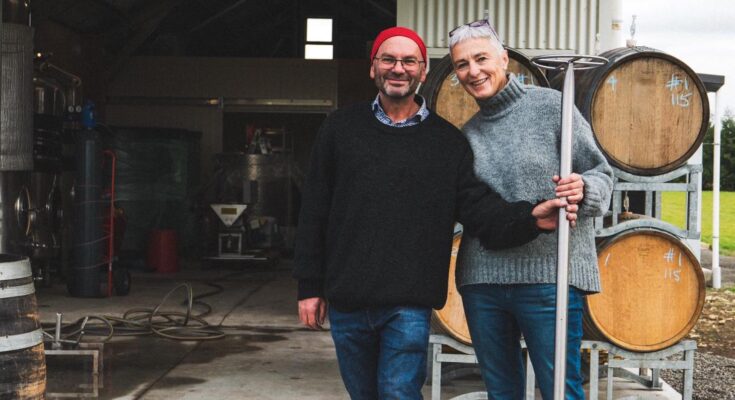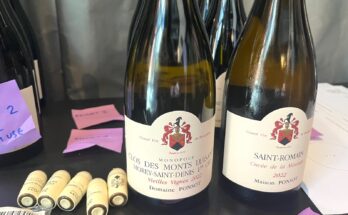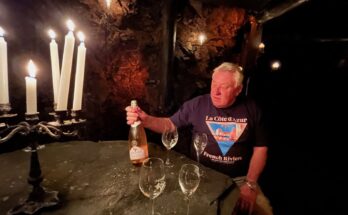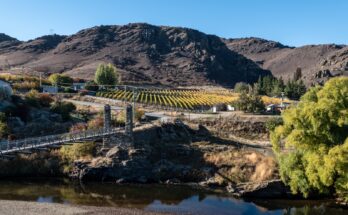On a recent trip to Wairarapa, between us we couldn’t quite find a time that worked for both the people at Big Sky wines and myself… so we resorted to a rain check and an email exchange of questions, answers and a little philosophising.
Can you give us some background to Big Sky – how did you get to the stage you’re at now, making wine at Te Muna Road? We are a story of love and partnership, having started Big Sky with my husband in 2005 we have applied our complimentary skills to make our very personal wine business.
How has Martinborough changed since you’ve been working there? What do you think is ahead for the future? We really do stand on the shoulders of Giants in Martinborough with some very intrepid pioneers planting the first grapes in 1979. I give thanks to them every day for the development of what has turned out to be a very cool little wine town that is growing in leaps and bounds.
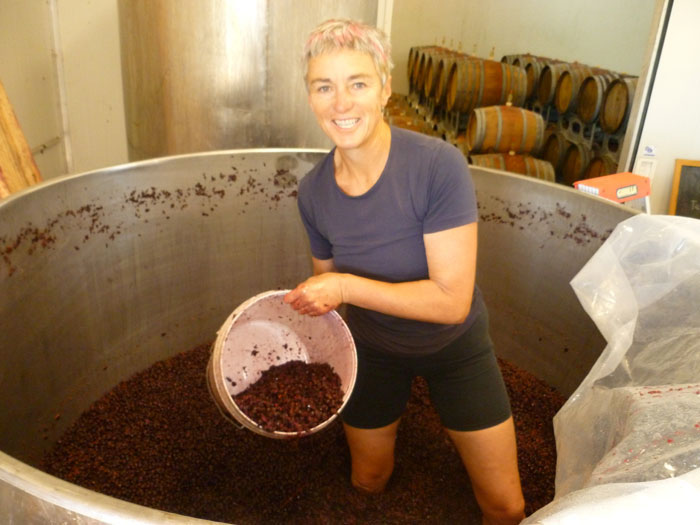
Can you say what defines a Wairarapa Pinot Noir compared to Central Otago for example? What about from a Burgundian version? Cool Spring winds during flowering result in fewer berries per bunch and a lot of very small berries. The resulting bunches are very different to other regions, smaller, looser and lighter i.e. a low natural yield. The average bunch weigh for Martinborough is 75-80 grams versus 120 to 140 grams in Central Otago.
The Martinborough style tends to be more savoury in aromatics, violet, dried herb, and savoury/umami flavours as they age, rather than red/black fruits. The palate is more about texture and length. Tannins are fine and layered, with length and persistence of palate.
Can you tell us about your land – vineyard, soils, elevation, etc? The Wairarapa is in the South-east part of the Wellington Peninsula pointing directly to Antarctica! Martinborough is in a rain shadow and attracts the lowest rainfall of the North Island. Te Muna Soils are an extension of the Martinborough Ancient River Terrace, but slightly elevated above the Martinborough terrace. The soils are yellow grey Pallic soils, very free draining.
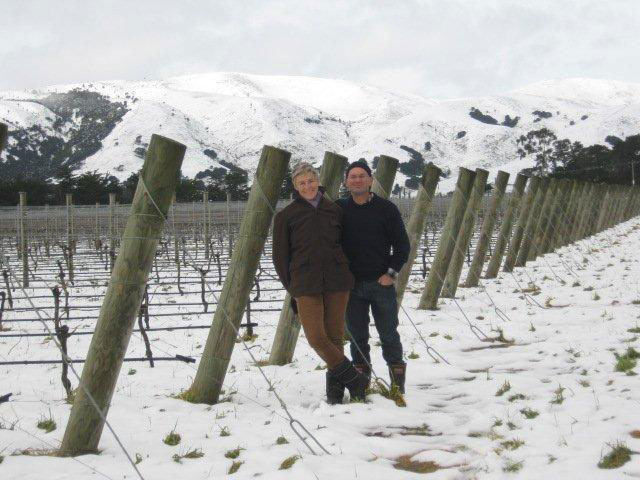
Do you see winemaking as artistic or scientific? Science is a very useful tool in winemaking, but most of the decisions we make are based on our senses i.e. what do we like, how does it taste/smell to us, does the fruit have the right flavours that we like (even thought it may be showing to be ripe scientifically)
Do you have a favourite Pinot Noir clone? I am quite a fan of the very elegant 115 clone, which coincidentally makes up most of our wine. I like the floral notes and delicacy of 115.
If you could make other wines, what would they be? I am still exploring the wonderful world of wine and feel like a novice, even after making wine for nearly 20 years.
It seems like everyone make a rosé now – is this now beyond a trend, and taken more seriously? We make a beautiful rose that is dry and a reflection of the pinot grapes that it is made from (we are not trying to replicate a Provencal rose)
What are your thoughts on using whole bunch in your winemaking? Well we have tested the limits of whole bunch by this year making a 100% whole bunch pinot noir.
We wanted a wine that had absolutely no interventions , so the whole bunches were snipped of the vine and put into the fermenter in the vineyard to pick up the yeasts, and gently pressed by very own feet. It is currently in barrel, so hold this space and lets see if we have gone mad!
Do you have any tricks or methods that are unique? Generally speaking we follow very low intervention winemaking . We spend a lot of time and effort growing fantastic organic fruit, so our wines do reflect the gorgeous fruit that we hand harvest. Once we pick the grapes the fruit is treated very gently with no pumping, so very old fashioned and simple winemaking practices that are not much different to the ancient ways.
So you could say we use old world techniques for our new world vibrant fruit!
Plans for the future? Keep having interesting conversations with the Martinborough Pioneers about winemaking and grape growing , honing our craft and having fun!

